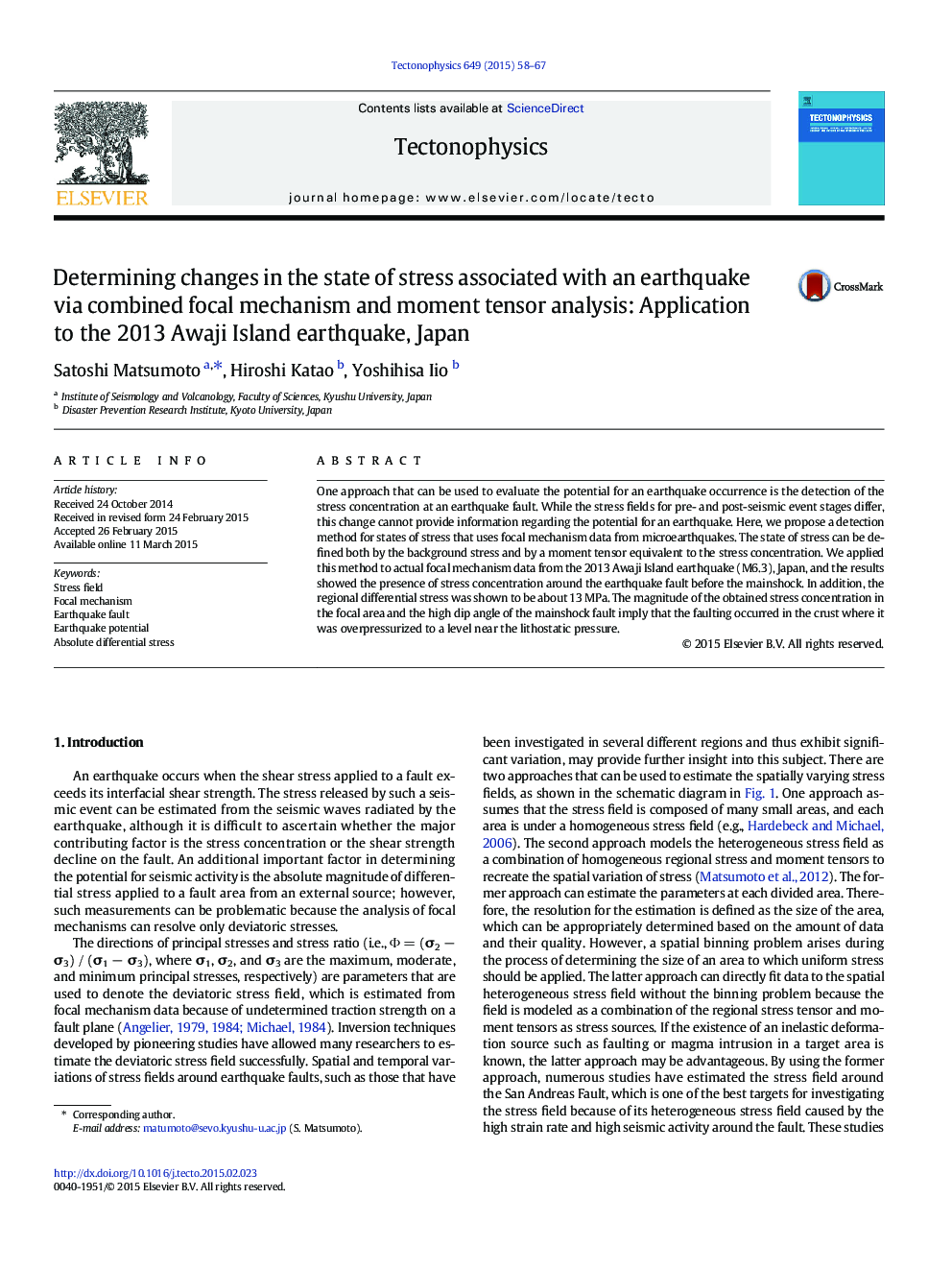| Article ID | Journal | Published Year | Pages | File Type |
|---|---|---|---|---|
| 4691663 | Tectonophysics | 2015 | 10 Pages |
•We develop a method to detect state of stress at faults from focal mechanism data.•The method was applied to the 2013 Awaji Island earthquake (M6.3), Japan.•Stress concentrated around the fault of the Awaji earthquake before its occurrence.•The regional differential stress was shown to be about 13 MPa.•We show evidence of high fluid pressure at the high dip angle of the fault.
One approach that can be used to evaluate the potential for an earthquake occurrence is the detection of the stress concentration at an earthquake fault. While the stress fields for pre- and post-seismic event stages differ, this change cannot provide information regarding the potential for an earthquake. Here, we propose a detection method for states of stress that uses focal mechanism data from microearthquakes. The state of stress can be defined both by the background stress and by a moment tensor equivalent to the stress concentration. We applied this method to actual focal mechanism data from the 2013 Awaji Island earthquake (M6.3), Japan, and the results showed the presence of stress concentration around the earthquake fault before the mainshock. In addition, the regional differential stress was shown to be about 13 MPa. The magnitude of the obtained stress concentration in the focal area and the high dip angle of the mainshock fault imply that the faulting occurred in the crust where it was overpressurized to a level near the lithostatic pressure.
